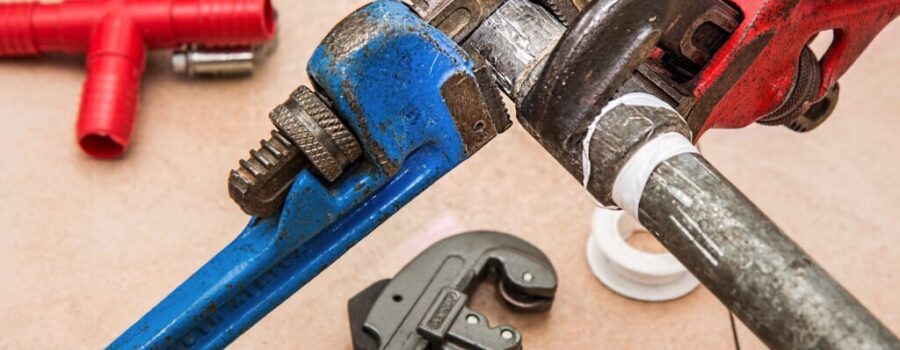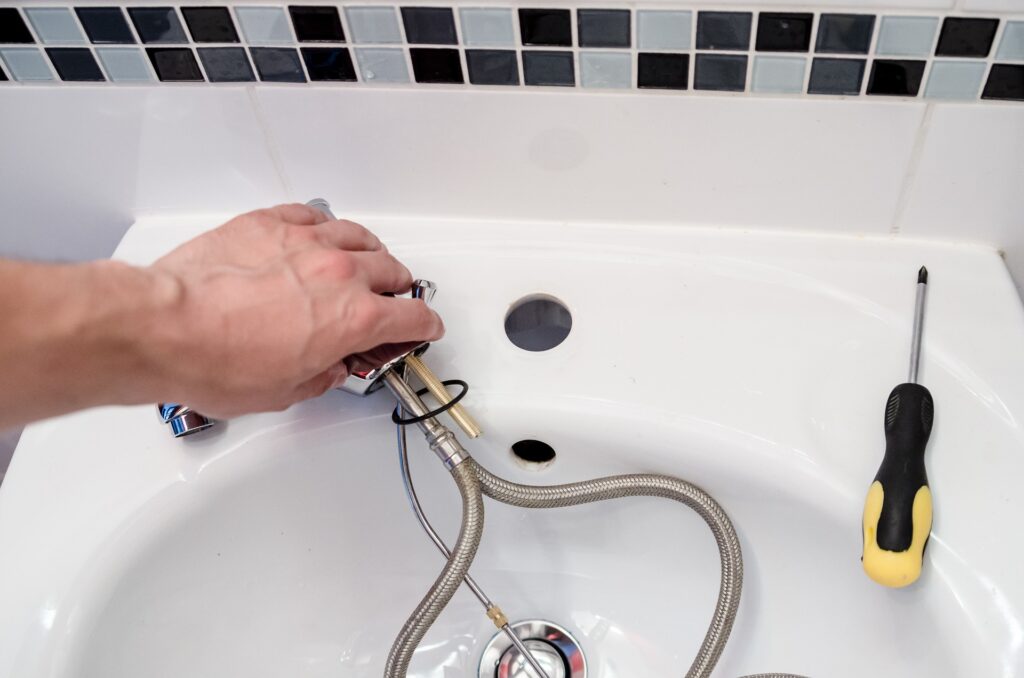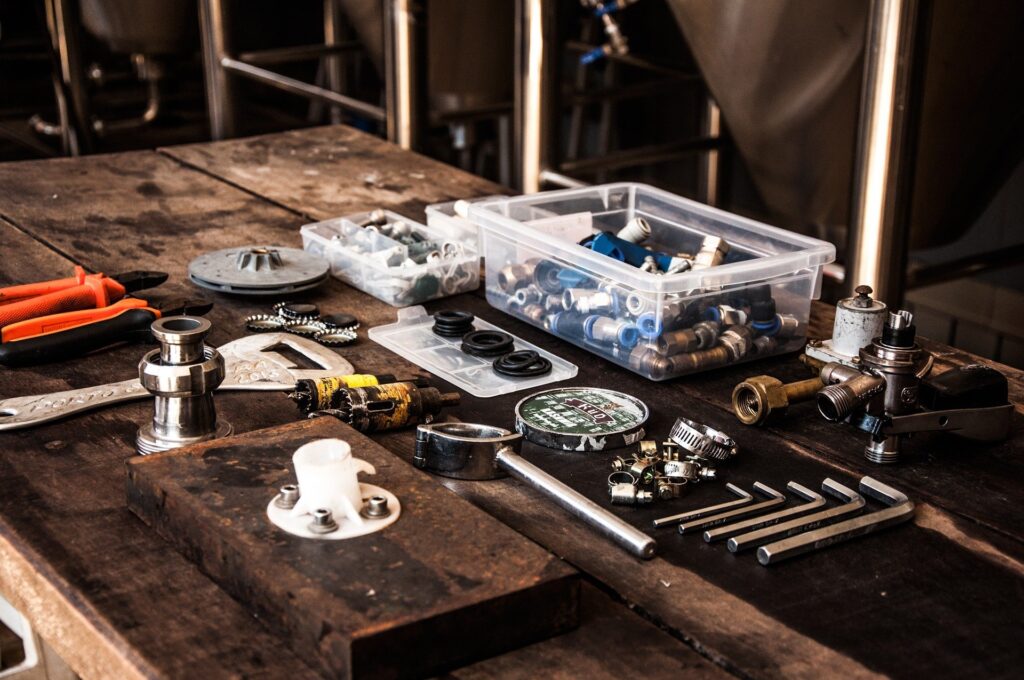
When is a Plumbing Permit Required?
In the event that you want to perform a sizable plumbing project or plumbing repair, it’s possible that you will need to obtain a plumbing permit before completing the task at hand. Even smaller plumbing projects may require a plumbing permit, which is something you should determine before work begins. A plumbing permit is a kind of document that can be provided to you by your local inspection department. This permit authorizes the plumbing work that you’re about to do and is necessary to ensure that the work is legal and adheres to the local plumbing code.
National plumbing codes are in place to make sure that the work performed by plumbers meets a certain level of quality. Keep in mind that local county and state regulations are also important and will be considered before national plumbing codes, which is why it’s essential that you check the California Plumbing Code to make sure that the work you’re about to do will qualify for a plumbing permit. In many counties throughout California, plumbing permits are necessary for the installation, repair, or replacement of any fixture or piping pertaining to a plumbing system. Before you get started on any plumbing project, you should be aware of when a plumbing permit is required, which is detailed further in the following article.
Key Takeaways:
- Plumbing permits are documents issued by your local inspection department when you are installing, replacing, or repairing something pertaining to the plumbing system.
- There are numerous plumbing jobs that require a permit that we discuss below.
- Our article explains the step-by-step process of obtaining a plumbing permit and what you should be aware of before beginning the process.
Plumbing Jobs That Require A Permit

To better understand when you may require a plumbing permit, it’s important to look at all of the jobs that call for a permit before work can begin. While county regulations and guidelines can differ, the majority of larger plumbing jobs will automatically require a permit. These jobs include:
- Moving plumbing to a new location – In the event that plumbing needs to be moved to a new location, this means that the job will be considered a remodeling job. During a remodel, building codes must be adhered to, which is why a plumbing permit is deemed to be necessary.
- Replacing a sewer – Any type of plumbing work that involves a sewer line will likely require a permit. This permit is needed because the new sewer line must meet local building codes.
- Water heater replacement – Water heaters are sizable appliances that require an ample amount of work to be done when being replaced. It’s also important to understand that there are safety regulations that must be taken into account for water heaters during installation, which is why a permit is necessary.
- Replacing a drain line – Replacing drain piping is a lengthy and time-consuming job that will always require a plumbing permit. Even if hardly any piping needs to be replaced, you will need to obtain a permit in order to complete this job without issue.
- Re-piping jobs – A re-piping job is one that requires the replacement of all water supply pipes throughout the home. Because of how extensive this type of job is, a permit must be obtained and the work done by an individual with a professional plumber license.
Plumbing Permit Process Step By Step

The plumbing permit process is straightforward but has around nine separate steps that you should be aware of before starting the process. These steps include:
- 1. When a plumbing service calls for a permit, the company that’s providing the services will request that a permit is pulled for the job at hand
- 2. The permit specialist within the plumbing company will research public records in order to effectively gather the necessary property information
- 3. A plumbing services contractor or agent will file an application for the permit, which can be done online or in person at an LADBS office
- 4. The permit may call for a Notice of Commencement, which is a legal document that must be prepared by the permit specialist and notarized with the signature of the property owner
- 5. The NOC must then be delivered to a county courthouse so that it can be recorded before you are provided with a certified copy
- 6. The NOC copy will then be taken to the LADBS where it will be combined with a plumbing permit before an inspection is scheduled
- 7. Once the plumbing project is completed, the inspection will be scheduled, which can take place at any time on a given day
- 8. The inspection will be completed before being passed or denied, the latter of which will come with instructions on how to correct the remaining issues before a second inspection takes place
- 9. The permit specialist will verify that the permit has been officially approved and that all paperwork has been completed
The first step of this process involves the plumbing company stating that a plumbing permit needs to be pulled, which essentially means that the documentation for the property where the job is taking place must be obtained. This documentation forms the basis of the plumbing permit and will dictate what types of changes can be made by the plumbing company.
Keep in mind that a Notice of Commencement is used during this process to officially denote that the plumbing service is about to begin. The form will contain info on all of the individuals who are involved with the project, which will include the plumbing company and the property owner. When this form is filed, it will remain in county records. All nine of the aforementioned steps must be strictly followed to ensure that the permit is approved and that work can begin.
Who Can Complete Plumbing in a Facility?

As the property owner, it’s possible for you to perform do-it-yourself plumbing, which allows you to effectively avoid the costs that come with plumbing services. However, completing this work on your own may not be the right option for your situation. Many property owners incorrectly assume that only large projects require a plumbing permit. However, many smaller plumbing projects will also call for a permit. If you attempt to complete a plumbing project on your own, this could be contradictory to the permit process.
As mentioned previously, the permit process involves nine separate steps, many of which can be difficult to complete if you’re not familiar with the requirements that professional plumbing companies must adhere to with most of the jobs they complete. When a professional plumber handles the permitting process, they should be able to complete it in a short period of time. By foregoing the assistance of a professional, you may find yourself sinking an ample amount of time and money into the process of obtaining a permit, which negates the benefits that come with DIY plumbing.
If you live in an apartment, it’s important to understand that you won’t be able to perform DIY plumbing even if the issue is minor. The landlord is in charge of maintaining the property and will be tasked with fixing these issues with the assistance of a building superintendent. As touched upon previously, a primary component in obtaining a plumbing permit is to get a plumbing inspection. These inspections are designed to make sure that drains empty, toilets flush, and water is able to run directly from the taps throughout the building. An inspection will occur once the plumbing service has been provided.
Steps in a Plumbing Inspection
The various steps that take place throughout a plumbing inspection include:
- Drains, fixtures, and supply lines will be thoroughly examined
- Sinks, toilets, and showers will be inspected
- Water filtration systems will be checked
- A comprehensive investigation will occur of any above-ground plumbing, which extends to shut-off valves located underneath the bathroom and kitchen areas
- Draining and venting systems throughout the laundry room, kitchen, and bathroom will be inspected
- The sump pump in the property will be examined
- An inspection of your tankless water heater or storage water heater will occur
- Underground sewer pipes and drains will undergo a video-camera inspection to check for misalignment issues and cracks that could cause problems in the future
The process involved with obtaining a plumbing permit can take anywhere from 1-3 weeks depending on how long it takes for you or the plumbing company to complete the aforementioned steps. As for the actual plumbing process, the length of time it takes to complete the plumbing service depends on what type of service is being administered. For new construction, the placement of an entirely new plumbing system can take around 3-5 days to complete.
If the entire home requires a re-piping, this process can take between 2-7 days. On the other hand, smaller plumbing jobs can typically be completed in a single day, which is why many homeowners choose to perform DIY plumbing. As long as all of the permit steps are followed, obtaining a plumbing permit is simple and hassle-free. If you are requesting the services of a professional plumbing company, they should be able to handle the permit process on their own.

Jason Somers, President & Founder of Crest Real Estate
With over 15 years of professional experience in the Los Angeles luxury real estate market, Jason Somers has the background, judgement and track record to provide an unparalleled level of real estate services. His widespread knowledge helps clients identify and acquire income producing properties and value-ad development opportunities.
Learn more about Jason Somers or contact us.



